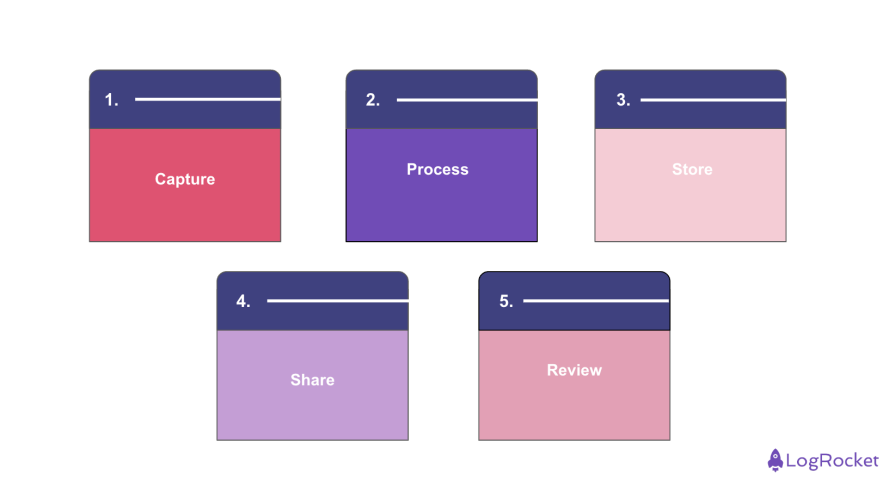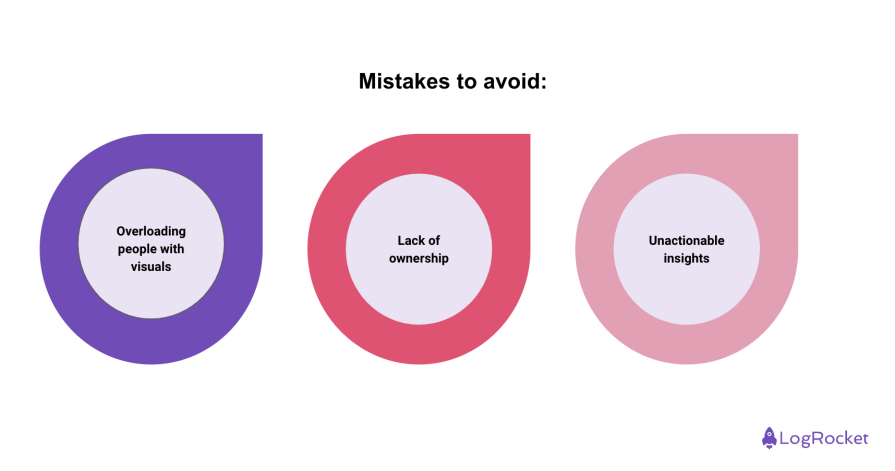Simply put, organizations that effectively share product learnings across teams and departments outperform those that don’t. As a product manager, you play a key role in ensuring that this happens since you naturally interact with a wide range of functions to launch and manage a product. To help facilitate this, try to make insight management an active part of your daily routine.

A better insight management process leads to:
Keep reading to learn more about insight management, including the key phases of the process and mistakes to avoid.
Insight management is a systematic and holistic process of capturing, processing, sharing, and storing insights within the organization.
The key objectives of establishing and continuously improving this process are:
As your insight management process matures, you achieve more efficient cross-team alignment, innovation, and decision-making.
In a mature organization, ProductOps usually owns the process. With smaller organizations, it’s usually the shared responsibility of product people, regardless of whether they are conscious of it.
On a high level, the insight management consists of five key phases:

Let’s dig deeper.
The first step is to gather as many insights as possible.
Quantity leads to quality.
The more insights you capture, the more connections you’ll see and the better your understanding of scale becomes — there’s a difference between an insight that repeats itself 20 times and one that does 300 times.
You can capture insights in two manners
Anything that only happens now and then, or once, falls into the “one time off” category.
Examples include:
The more efficient you are at planning, conducting, and wrapping up these initiatives, the better.
Although insights from one-time-off initiatives are helpful, a healthy insight management process is fueled by continuous research.
The more proficient you are at continuous discovery habits, the more insights you’ll capture. These include:
Our way of processing insight management consists of cleanup and converging.
Start by reducing the noise.
I usually review all captured insights weekly, and discard the ones that:
FOMO can be powerful, but you need to focus on the most useful insights first.
People don’t have time to watch 50 videos, analyze the results of each survey, or even read all of your summaries and executive reports.
So, I strongly advocate maintaining ever-living artifacts instead of using raw insights.
Namely, we always have
Then, whenever we get new insights, we just ask ourselves if they add or contradict something from existing artifacts.
If they do, we update the artifacts.
If they don’t, it means our understanding is up-to-date.
You should have an open-access space to store all your artifacts with version control.
It doesn’t have to be anything fancy. I just keep every artifact in Miro, and whenever I make any adjustments, I just copy-paste it and add comments on what changed and based on what. It makes it easy to look back and understand why those artifacts look the way they do.
You could maintain a dedicated directory of individual research, interview transcripts, etc. However, it’s a lot of effort to maintain, and hardly anyone will use it, especially if you have up-to-date artifacts.
Whenever you change any artifact, make sure to update the whole company.
A good old Slack channel does the job here. Message everyone what you updated, based on what, and especially make sure to ping the teams most impacted. Make sure conversations are contained within threads so that you can store research and version history.
To kickstart more vivid conversations, consider regular “insight-sharing” ceremonies.
For example, I have “bi-weekly product meetings” during which I recap all new insights and learnings collected in the past two weeks (~20 mins) and then have a Q&A and discussion with anyone interested (~40 mins). It’s usually a great session for both alignment and digging deeper.
Lastly, if you discover a critical insight, consider setting up a dedicated session with relevant people to go deeper into it.
There are two types of insight management reviews worth conducting:
Even though updating key artifacts is a review process in itself, it’s also a good practice to occasionally review them from a holistic perspective.
Maybe the user journey still includes some pain points you haven’t seen reappearing in recent insights. That might mean it should no longer be there.
Most people usually add new things to key artifacts after they conclude their research but are more hesitant to remove existing findings.
I always plan to do the cleanup on a monthly basis, although realistically, it happens once a quarter or so.
There always happens to be something “more urgent” going on in my teams.
Just like with scrum sprints or any other process, regular retrospectives to figure out
Remember to avoid doing them in a silo. Include your most important stakeholders — people who actually use those insights down the road.
If the process isn’t beneficial for them, the process doesn’t work.
The process I just outlined is what works for me. It doesn’t mean it’ll work for you.
Perhaps storing living artifacts is not your thing, or you have a small enough organization to discuss the newest findings in a more workshop-like fashion than just sending Slack updates.
As long as you have the skeleton in place, then you have a robust insight management process, even if you do it completely differently than I do.
Although there’s one “one-fits-it-all” approach, there are a few mistakes to avoid in almost any context:

Keep your learnings sweet and to the point.
You don’t need to mention every quote, every detail, or every data point.
As helpful as these might sound, people are always slightly too busy.
An insight management process should have one specific owner.
Whether it’s a CPO, ProductOps specialist, or just one of many PMs, it doesn’t matter.
If it’s everyone’s responsibility, it doesn’t get done.
A good insight either prompts an action or clearly reminds you that no action is needed and the team is on the right track.
If your learnings don’t meet these criteria, set up a retrospective and determine where the problem lies.
Collecting insights just for the sake of insights is a waste.
The bigger the organization becomes, the more important it is to have robust insight management in place.
Insight management is all about:
Master these basics, and your product quality will increase noticeably across the organization.
Featured image source: IconScout

LogRocket identifies friction points in the user experience so you can make informed decisions about product and design changes that must happen to hit your goals.
With LogRocket, you can understand the scope of the issues affecting your product and prioritize the changes that need to be made. LogRocket simplifies workflows by allowing Engineering, Product, UX, and Design teams to work from the same data as you, eliminating any confusion about what needs to be done.
Get your teams on the same page — try LogRocket today.

A practical five minute revenue estimation method to help product managers compare ideas, drop low impact features, and prioritize smarter.

A practical guide for PMs who want to stop being bottlenecks, delegate smarter, and lead teams effectively with a clear ownership framework.

Stop letting unreliable data block features. Treat data as inventory to track quality, ownership, and ship with confidence.

Learn why slide decks slow teams down and explore better tools like whiteboards, PRDs, and prototypes to improve collaboration and alignment.